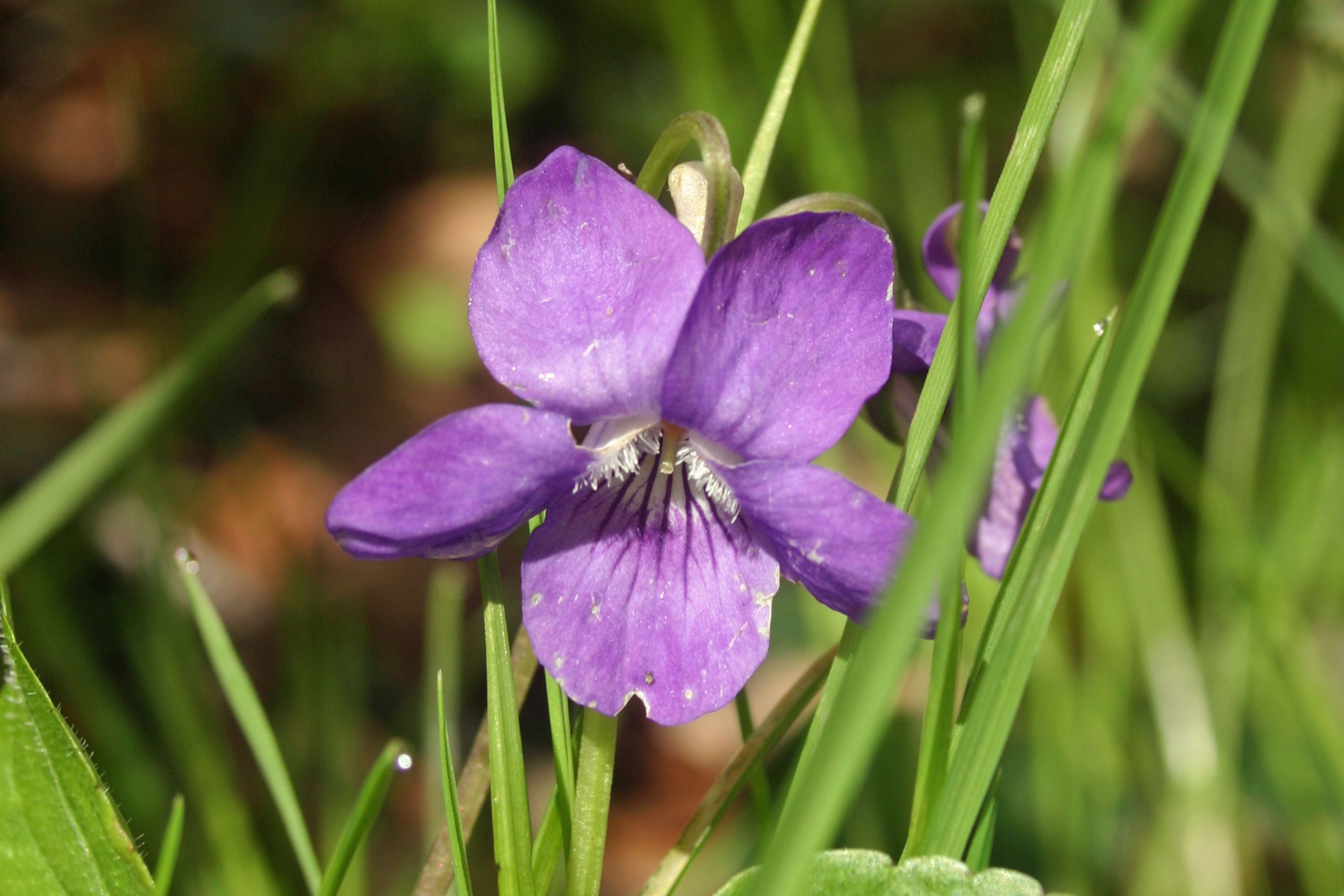Common dog violet
(Viola riviniana)

Description
Viola riviniana, commonly known as the Common Dog-violet or Wild Pansy, is a small herbaceous perennial plant that belongs to the family Violaceae. It is native to Europe and Western Asia, and it can be found in a wide range of habitats, including woodlands, meadows, hedgerows, and gardens. In this article, we will explore the botanical characteristics, distribution, habitat, cultivation, and medicinal uses of Viola riviniana. Botanical Characteristics: Viola riviniana is a low-growing, clump-forming plant that can reach a height of up to 15 cm. It has a creeping rhizome, which produces small tufts of leaves and a single flowering stem. The leaves are heart-shaped, with rounded or pointed tips, and they are arranged in a basal rosette. The leaf margin is crenate or serrate, and the upper surface is dark green, while the lower surface is paler. The flowers are solitary, with five petals that are typically purple-blue in color, but they can also be white, pink, or yellow. The petals are asymmetrical, with the lower petal being larger and marked with dark purple veins. The fruit is a capsule, which contains numerous small, black seeds. Distribution and Habitat: Viola riviniana is widely distributed throughout Europe and Western Asia. It is common in the United Kingdom, where it is found in a wide range of habitats, including woodlands, meadows, hedgerows, and gardens. It prefers moist, well-drained soils, and it can tolerate both full sun and partial shade. It is often found growing alongside other violets, such as Viola odorata, and it is an important nectar source for early-emerging bees and butterflies. Cultivation: Viola riviniana is a hardy plant that is easy to cultivate in the garden. It prefers moist, well-drained soils, and it can be grown in full sun or partial shade. It is often used as a ground cover in shady areas, or as a naturalizing plant in meadows and woodlands. It can be propagated by seed, or by division of the rhizomes in the autumn or spring. It is a relatively short-lived plant, and it may need to be replaced every few years. Medicinal Uses: Viola riviniana has a long history of medicinal use, particularly in traditional herbal medicine. The leaves and flowers of the plant contain a range of compounds, including flavonoids, saponins, and alkaloids, which have been shown to have anti-inflammatory, analgesic, and diuretic properties. The plant has been used to treat a wide range of ailments, including coughs, colds, bronchitis, rheumatism, and skin disorders. The leaves and flowers of Viola riviniana can be used to make an infusion or tincture, which can be taken internally or applied topically. The plant is considered safe when used in moderate doses, although it may cause allergic reactions in some individuals. It should not be used during pregnancy or breastfeeding. In conclusion, Viola riviniana is a beautiful and useful plant that has a long history of medicinal use. Its striking purple-blue flowers and heart-shaped leaves make it a popular ornamental plant in gardens and parks, while its anti-inflammatory and diuretic properties make it a valuable herbal remedy. Whether you are a gardener, a herbalist, or simply a lover of nature, Viola riviniana is a plant that is sure to delight and inspire.
Taxonomic tree:







